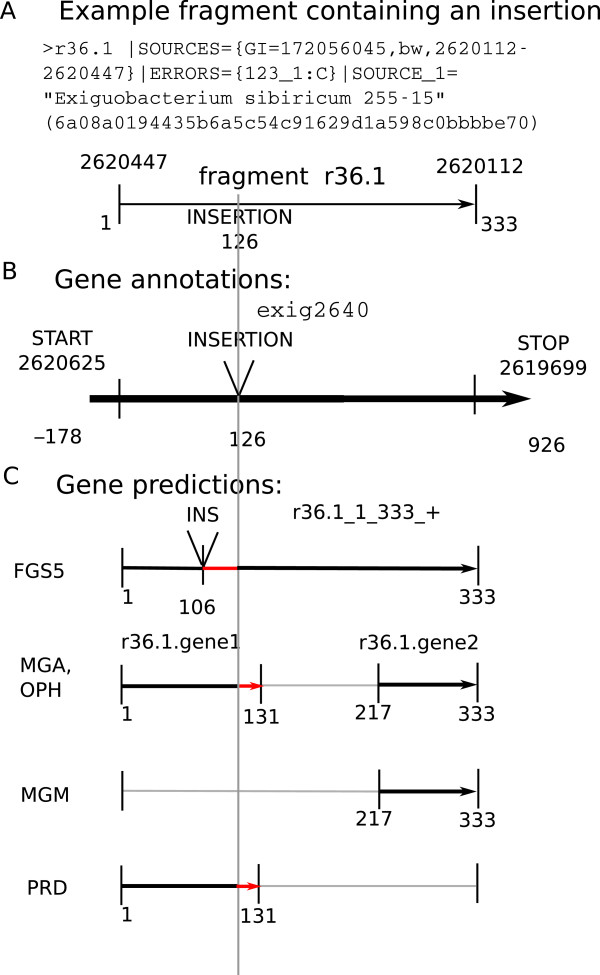Figure 3.
Example fragment containing an insertion. (A) The fasta header for an error-free artificial fragment from E. sibricum that contained a single, artificial insertion near the center of the fragment. This insertion disrupted gene prediction in all five gene callers. (B) Refseq annotations show this fragment is entirely contained within one annotated gene, though it is artificially split into two reading frames. (C) Fraggenescan predicts an insertion in the wrong place, leading to seven nonsense amino acids adjacent to the insertion. The other gene prediction tools predict one or two shorter fragments, one of which has nonsense residues at the end of the prediction. The alignment-based evaluation technique would count all five as true positives because of the length of the correctly translated regions; the reading-frame technique would count all but FGS as false negatives because of their failure to correctly translate the middle of the fragment.

